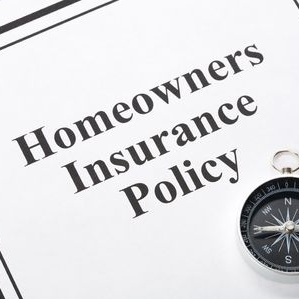 Many home owners assume that when they purchase a second home, their new homeowner’s insurance policy will be very similar to the current policy on their primary residence. Very few realize how different these policies are in terms of what is and isn’t covered. In some instances these policies can be difficult to obtain and possibly very expensive. “Why?” you wonder. “Aren’t all houses viewed the same by the insurance companies?” Not really and for good reasons.
Many home owners assume that when they purchase a second home, their new homeowner’s insurance policy will be very similar to the current policy on their primary residence. Very few realize how different these policies are in terms of what is and isn’t covered. In some instances these policies can be difficult to obtain and possibly very expensive. “Why?” you wonder. “Aren’t all houses viewed the same by the insurance companies?” Not really and for good reasons.
All homeowner’s insurance policies provide a package of various coverages. It is important to understand that you are covered only if the loss is caused by a peril that your policy covers. Peril is an insurance term for a specific risk or cause of a loss. Some policies (all risk policies) cover all perils except ones specifically excluded. On the other end of the spectrum are policies that cover only the perils named in the policy (named perils policies). For example, if your home is damaged by an earthquake and your policy doesn’t cover earthquake perils, then your policy won’t pay for the loss of use of your home. A total of 17 perils are defined and used by the insurance industry when writing policies.
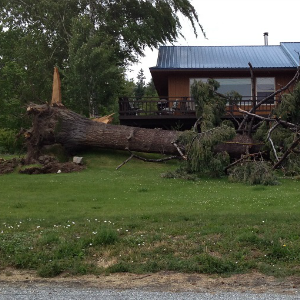 In standard Broad Form or Special Form Policies which are the most popular of all homeowners forms, your property is insured against a loss from a majority of the typical perils. The perils commonly excluded are flood and earthquake. Broad Form will typically exclude coverage for acts of war, nuclear accidents and other perils named in the policy. Since all insurance policies are contractual obligations between the insurer and you, the insured, it is important to understand the obligations of each party. The insurer’s obligation is to provide the specified insurance coverage for the policy period. The insured’s obligation has two parts: the obligation to pay the policy premium and the obligation to comply with the policy conditions. It is this second part of the insured’s responsibility where issues can arise and result in denial of a claim.
In standard Broad Form or Special Form Policies which are the most popular of all homeowners forms, your property is insured against a loss from a majority of the typical perils. The perils commonly excluded are flood and earthquake. Broad Form will typically exclude coverage for acts of war, nuclear accidents and other perils named in the policy. Since all insurance policies are contractual obligations between the insurer and you, the insured, it is important to understand the obligations of each party. The insurer’s obligation is to provide the specified insurance coverage for the policy period. The insured’s obligation has two parts: the obligation to pay the policy premium and the obligation to comply with the policy conditions. It is this second part of the insured’s responsibility where issues can arise and result in denial of a claim.
There are several important exclusions regarding the coverages provided for the property damage to dwelling and attached or detached structures. These exclusions are the key to analyzing the perils insured against since direct physical loss to property is covered unless specifically excluded. These are just a few of the typical exclusions that would be common to primary residences and vacation homes.
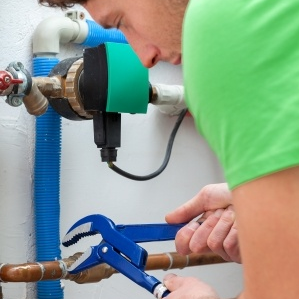 Freezing– When a dwelling is vacant, unoccupied or under construction, the insured must maintain heat in the building or shut off the water supply and drain the system and appliances of water. Otherwise any freezing of a plumbing, heating, air conditioning, automatic fire sprinkler system or a household appliance is not covered. Damage is excluded from coverage unless the preceding precautions have been properly implemented. It is important in order to minimize losses that the insured be aware of power losses or heating system malfunctions that would place the property in jeopardy of freezing and then take immediate steps to protect the property from damage.
Freezing– When a dwelling is vacant, unoccupied or under construction, the insured must maintain heat in the building or shut off the water supply and drain the system and appliances of water. Otherwise any freezing of a plumbing, heating, air conditioning, automatic fire sprinkler system or a household appliance is not covered. Damage is excluded from coverage unless the preceding precautions have been properly implemented. It is important in order to minimize losses that the insured be aware of power losses or heating system malfunctions that would place the property in jeopardy of freezing and then take immediate steps to protect the property from damage.
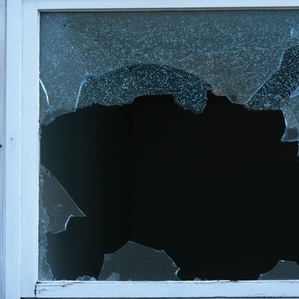 Vandalism and Malicious Mischief – There is no coverage for vandalism and malicious mischief if the dwelling has been vacant for more than 30 consecutive days immediately before the loss. The insurance company recognizes that no one is around to watch out and occupy the home thereby reducing the damage potential and exposure loss. Vacant and unoccupied homes are frequently targets for this form of criminal activity. In some instances such as glass breakage; rain, snow or other inclement weather could penetrate inside the building and exterior wall building components causing more extensive damage from mildew, mold and dry rot. Therefore, it is extremely important to have someone frequently inspecting the home and taking necessary steps to prevent further out of pocket, non-covered losses to the insured.
Vandalism and Malicious Mischief – There is no coverage for vandalism and malicious mischief if the dwelling has been vacant for more than 30 consecutive days immediately before the loss. The insurance company recognizes that no one is around to watch out and occupy the home thereby reducing the damage potential and exposure loss. Vacant and unoccupied homes are frequently targets for this form of criminal activity. In some instances such as glass breakage; rain, snow or other inclement weather could penetrate inside the building and exterior wall building components causing more extensive damage from mildew, mold and dry rot. Therefore, it is extremely important to have someone frequently inspecting the home and taking necessary steps to prevent further out of pocket, non-covered losses to the insured.
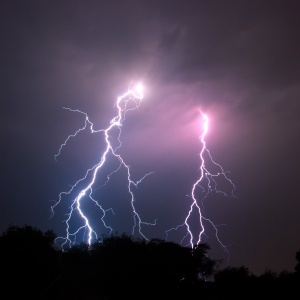 Power Failure – This falls into the category of the list of 8 general exclusions that apply to all of the coverage for dwelling and structures. Loss caused by the failure of power is excluded if the failure occurs off the residence premises. Therefore, if a wind or ice storm knocked out the power from the local electric company and a freezer full of food spoiled, there would be no coverage for the loss of the food. If the power failure is caused by an insured peril on the residence, for example a lightning strike, any resulting loss is covered. There are other risk exposures to the property owner from spoiled food that re-freezes when power is restored in a vacation home.
Power Failure – This falls into the category of the list of 8 general exclusions that apply to all of the coverage for dwelling and structures. Loss caused by the failure of power is excluded if the failure occurs off the residence premises. Therefore, if a wind or ice storm knocked out the power from the local electric company and a freezer full of food spoiled, there would be no coverage for the loss of the food. If the power failure is caused by an insured peril on the residence, for example a lightning strike, any resulting loss is covered. There are other risk exposures to the property owner from spoiled food that re-freezes when power is restored in a vacation home.
Power Surge – If a power spike damages your expensive electronics and the cause is not lightning striking your home, chances are you don’t have coverage for replacement or repair of those items. In most cases, power surge is an exclusion on your policy unless lightning caused it to occur. Many owners of vacation homes neglect to unplug their electronic devices nor do they utilize proper surge protection devices that adequately protect the various sensitive electronics and appliances throughout today’s homes. A cascading series of different types of surge protection devices are required to provide appropriate protection and the majority of homes today do not have these types of protective devices installed.
Neglect – If the insured neglects to use all reasonable means to save and preserve property at and after the time of loss, there is no coverage for any damage that results. This is the “mitigation of damages” obligation that is imposed as a condition upon the insured. The insured must act quickly to use the same degree of care as would be used if the building was uninsured. If the insured property is a vacation home that is infrequently used during the off-season when severe weather happens and subsequent damage does occur, the insured must take steps to verify that the property has not been damaged to avoid their claim being denied under this neglect exclusion. Waiting for weeks or months after the occurrence of damage from such events to inspect and then take steps to prevent further damage would be reasonable grounds for denial of claim by the insurer.
There are also a prescribed set of duties the insured must perform if there is a loss to a covered property. Again, failure to perform these contractual duties are grounds for dismissal of a claim for loss.

Show the damaged property – As often as the insurer reasonably requires, the insured must show the damaged property and provide additional records and documents. With a vacation home this presents more of a challenge since the insured is not always present or may be out of state or too far away to be able to adequately respond.
File a Proof of Loss – Usually within 60 days of the insurer’s request, the insured must submit a sworn proof of loss. This must include the time and cause of loss, the interest of the insured and all others in the property including all liens, other potential insurance covering the loss and any other relevant information. This information helps the insurance company to determine insurable interest, investigate the loss and to ultimately coordinate payment with any other co-insurance provider.
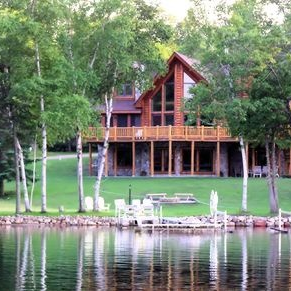 Vacant or Vacation Home Insurance
Vacant or Vacation Home Insurance
There can be other policy exclusions for vacant or vacation home insurance. Vacation home insurance is almost always provided as a Named Perils policy, instead of a Comprehensive policy, because of the risk associated with the part-time occupation of the home. Coverage for water damage, vandalism or malicious mischief may be more difficult or very expensive to arrange. If a water pipe bursts or if vandals break into your vacation home while you are not there, the damage is generally more severe since no one is around to take preventative or corrective measures. In some cases, policies may be “Dwelling Fire Only” whereby the structure losses are only covered in the event of fire. Any other loss or damage from other perils would not be covered and the insured could face significant out of pocket losses for contents and non fire related losses.
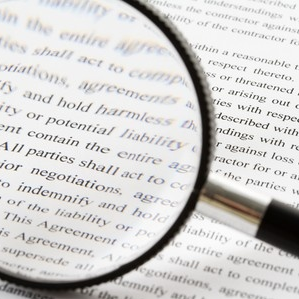 Depending upon the various definitions and terms of your insurance policy and the length of time you are absent from your home, you may also have to purchase a “vacant home” policy. Some insurance companies define vacant as simply not having an occupant for a period of 30 days. Vacant home policies have additional underwriting criteria and generally require that you keep the utilities on, house and grounds maintained and someone must inspect the property on a regular basis. Using a professioinal HomeWatch service that provides regular written reports to you, the property owner, establishes your compliance with this critical underwriting condition. Vacant home policies will exclude some or all of the following perils for loss coverage: vandalism, theft/burglary, malicious mischief, water and mold damage, freezing pipes and glass breakage. Simply speaking, insurance companies view vacant homes as being high-risk homes which have less upkeep and attention and as a result are easy targets for burglars, vandals and potential squatters. Insurance companies are able to determine how long a home has been vacant by reviewing police reports, checking utility billings, inspecting the home condition and by interviewing neighbors.
Depending upon the various definitions and terms of your insurance policy and the length of time you are absent from your home, you may also have to purchase a “vacant home” policy. Some insurance companies define vacant as simply not having an occupant for a period of 30 days. Vacant home policies have additional underwriting criteria and generally require that you keep the utilities on, house and grounds maintained and someone must inspect the property on a regular basis. Using a professioinal HomeWatch service that provides regular written reports to you, the property owner, establishes your compliance with this critical underwriting condition. Vacant home policies will exclude some or all of the following perils for loss coverage: vandalism, theft/burglary, malicious mischief, water and mold damage, freezing pipes and glass breakage. Simply speaking, insurance companies view vacant homes as being high-risk homes which have less upkeep and attention and as a result are easy targets for burglars, vandals and potential squatters. Insurance companies are able to determine how long a home has been vacant by reviewing police reports, checking utility billings, inspecting the home condition and by interviewing neighbors.
It is also important to avoid lying about the status of your home to an insurance carrier. Claims arising from a vacant or a vacation home when insured under a regular homeowner policy are considered fraudulent and can either be denied or you could face hefty premium increases lasting years. If you are caught committing fraud, you could also face hefty fines and serve jail time as well as having your policy voided. Of course, the more claims you have or the greater the dollar amounts of the claims, the more your premium will increase at renewal time. The best advice is to select the policy that best fits the living situation of the home so that you have proper coverage if something happens.
A significant way to keep premiums down and reduce the overall cost of claims is to have a structured program of professional monitoring of your vacant/ vacation home. Frequently scheduled visits by a trained professional can help to prevent damage from becoming an expensive and costly disaster. In many cases, this service will also identify other issues in the home needing corrective action thereby preventing the potential for future damage. Hiring a professional service also demonstrates to your insurance carrier that you have exercised reasonable means to preserve and protect your property avoiding possible loss denial under your policy’s “neglect” exclusions. Having this service may also be a specific underwriting condition of your particular policy.
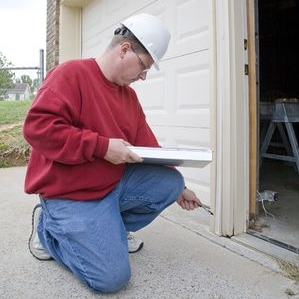 Depending upon the various definitions and terms of your insurance policy and the length of time you are absent from your home, you may also have to purchase a “vacant home” policy. Some insurance companies define vacant as simply not having an occupant for a period of 30 days. Vacant home policies have additional underwriting criteria and generally require that you keep the utilities on, house and grounds maintained and someone must inspect the property on a regular basis. Using a professioinal HomeWatch service that provides regular written reports to you, the
Depending upon the various definitions and terms of your insurance policy and the length of time you are absent from your home, you may also have to purchase a “vacant home” policy. Some insurance companies define vacant as simply not having an occupant for a period of 30 days. Vacant home policies have additional underwriting criteria and generally require that you keep the utilities on, house and grounds maintained and someone must inspect the property on a regular basis. Using a professioinal HomeWatch service that provides regular written reports to you, the 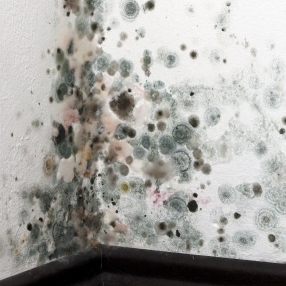 property owner, establishes your compliance with this critical underwriting condition. Vacant home policies will exclude some or all of the following perils for loss coverage: vandalism, theft/burglary, malicious mischief, water and mold damage, freezing pipes and glass breakage. Simply speaking, insurance companies view vacant homes as being high-risk homes which have less upkeep and attention and as a result are easy targets for burglars, vandals and potential squatters. Insurance companies are able to determine how long a home has been vacant by reviewing police reports, checking utility billings, inspecting the home condition and by interviewing neighbors.
property owner, establishes your compliance with this critical underwriting condition. Vacant home policies will exclude some or all of the following perils for loss coverage: vandalism, theft/burglary, malicious mischief, water and mold damage, freezing pipes and glass breakage. Simply speaking, insurance companies view vacant homes as being high-risk homes which have less upkeep and attention and as a result are easy targets for burglars, vandals and potential squatters. Insurance companies are able to determine how long a home has been vacant by reviewing police reports, checking utility billings, inspecting the home condition and by interviewing neighbors.
Early detection through periodic HomeWatch inspections enables quicker repairs to glass breakage from either illegal intrusion or storm damage preventing further weather related non-insured damage to building components saving you considerable expense related to potential mold damage. The average cost for mold remediation done by a professional is about $3000 – $6000. The cost can be significantly higher depending upon the amount of mold, where it is located, and if there is any water damage to the house. Mold can start growing within 24 to 48 hours in the presence of moisture and in several weeks it can be visible to the naked eye as spots on drywall or carpet. If left unchecked or undiscovered for months, the costs can skyrocket into the five figure range. Most insurance companies now exclude coverage for this because of the high remediation costs involved. Therefore, the financial burden falls upon the homeowner should this problem arise. Even if mold remediation is covered, most policies place a limit on the expenses, so this can still be a significant out of pocket loss to the insured.
If you have a vacant or vacation home, make sure you talk with your insurance agent about matching up your insurance policy to the actual home living situation so you have the correct coverage, don’t misrepresent how you use the home. Make sure you understand the perils that are covered and those that aren’t. Pay particular attention to any and all exclusions and policy definitions as well as your specific duties and other underwriting requirements. Remember that your insurance policy is a contract between you and your insurance provider. You are required to be in compliance with your duties and obligations for them to compensate for any losses. Contract with a professional Home Watch service to frequently inspect your vacant/vacation home in order to keep your loss exposure and premium increases to a minimum and to further demonstrate that you have not neglected or abandoned the home. Before paying any claims, it is very likely that your insurance provider will investigate and confirm that the policy contract they have with you is an accurate representation of the home occupancy you’ve indicated on your application and that all underwriting requirements have been satisfied for the specific type of insurance coverage.

Recent Comments